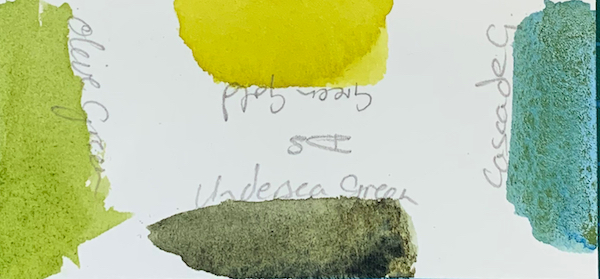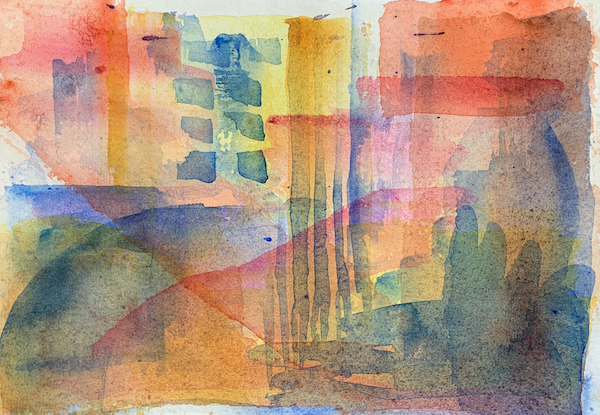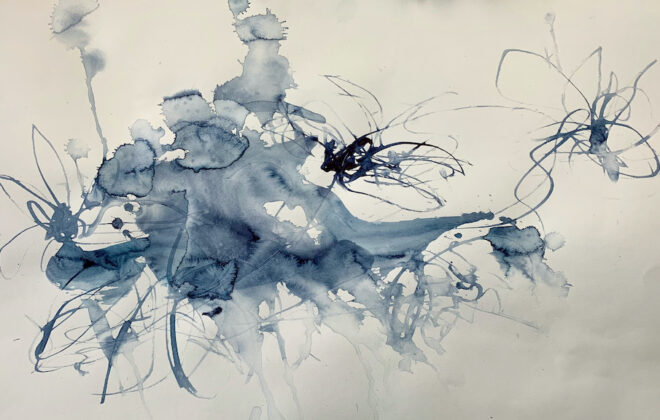Artist’s Block – is it Real?
Yes, artist’s block is a real thing. What is it? It is feeling stuck. Sometimes it becomes fear of failure. It is a state of anxiety. Fundamentally, it is an emotional state. And just like many other states of mind, we can use some simple tools to diminish its impact on our creativity.
I often talk about finding joy in the process of creating art. What I really mean is a sense of flow. It is that feeling of time standing still as you become immersed in the process, enjoying the emerging images in front of you. But that doesn’t always happen. Sometimes we have long periods when other things take us away from our art and that flow just doesn’t happen. I find that if a couple of paintings don’t work out for some reason, I tense up and get stuck. There have been times when this has been a real problem for me. But I’ve worked out my own ways to deal with this, and that knowledge has given me the confidence to know that even when an artist’s block occurs, I will get through the stuck phase and back into the flow.
How other artists have dealt with artists’s block
- Firstly, remember that this happens to most artists at some point. You are not alone; even some of the most famous artists have dealt with lean periods in their productivity. Not only did Claude Monet have a two year period when he didn’t paint, but he also destroyed many of his canvases.
- Remember that a lot of successful artists spend as much time thinking as they do painting. If this happens at the same time as a feeling of artist’s block, this can signal a shift in style or subject. Cezanne left the Paris scene and moved to Provence for solitude. This is where his work shifted and he found his later, celebrated style of working.
- A change in environment can create a renewed enthusiasm for painting. If you can, shift where you work. It may be tough to find a new studio space, but even painting in a different part of the room can generate a new dynamic. Georgia O’Keefe moved to New Mexico and found her new inspiration there
- Step away from your brushes for a while to come back refreshed. The key is to do this without holding any anxiety about painting. Go for a walk. Read a book. Find a way to switch off your painting brain for a while. Picasso turned to writing poetry and published a journal.
- Try a new medium or style to push you out of your comfort zone. Barbara Hepworth went to Greece to study classical sculpture with Margaret Gardiner.
Taking inspiration from Hepworth, when I had a barren painting phase after a severe knee injury, I overcame it by booking myself into a weekly oils course for 6 weeks. The change of approach required to paint in oils released the pressure on my watercolour practice.
If you experience a period of artist’s block, take heart from these prolific artists whose work is admired by the art world. If it can happen to them, it can happen to any of us.
Most importantly, don’t dwell on the idea that you might be experiencing an artist’s block. If you relax and remove the stress, you can trust in the process and the joyful aspects of painting will return.
Share this:
Related Posts
Leave a Reply
Recent Posts
Archives
- July 2025
- October 2024
- May 2024
- March 2024
- January 2024
- October 2023
- May 2023
- January 2023
- December 2022
- November 2022
- October 2022
- September 2022
- September 2021
- July 2021
- June 2021
- May 2021
- April 2021
- March 2021
- February 2021
- January 2021
- December 2020
- November 2020
- October 2020
- September 2020
- August 2020
- July 2020
- June 2020
- April 2020
- March 2020
- December 2019
- November 2019
- October 2019




